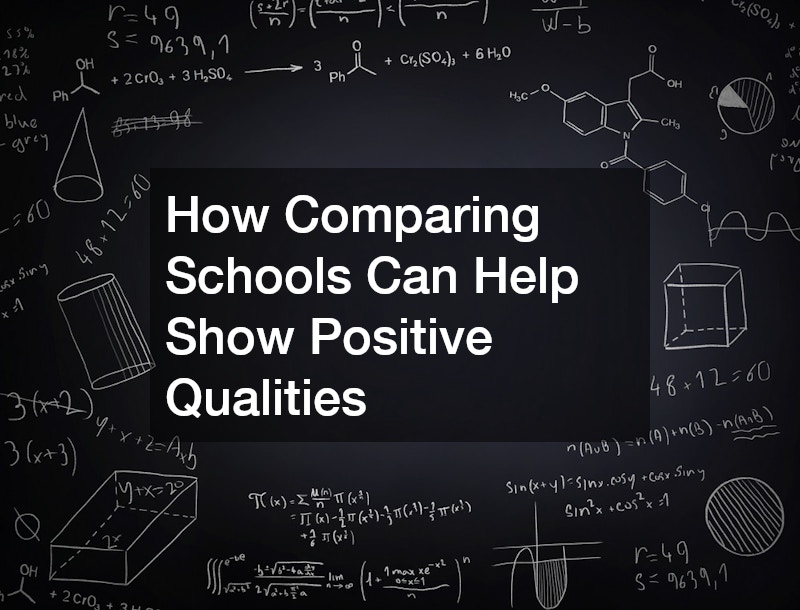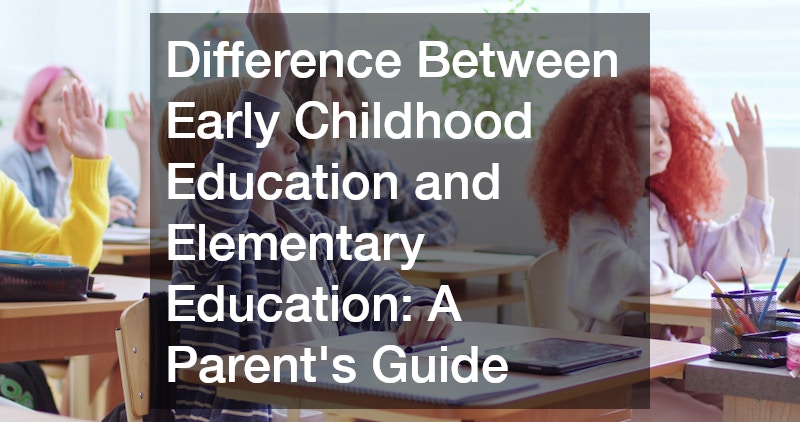
Locating The Best Fit School
Comparing schools is an essential step in finding the right educational environment for a child. This process involves examining various aspects of each institution, from academic performance and extracurricular activities to teacher quality and community involvement. By meticulously comparing schools, parents and guardians can make informed decisions that align with their child’s needs and aspirations. This practice not only highlights the positive qualities of each school but also uncovers unique strengths and opportunities that might otherwise go unnoticed. In an era where education is highly competitive, and the stakes are high, a thorough comparison of schools can serve as a powerful tool to ensure children receive the best possible education.
Having your child in a good school district provides access to quality education, experienced teachers, and advanced resources. It fosters a positive learning environment, promotes academic success, and encourages extracurricular involvement. Additionally, it enhances social development, prepares students for higher education, and improves future career prospects.

How Comparing Schools Enhances Awareness of Strengths
When comparing schools, one of the most significant benefits is the enhanced awareness of each school’s strengths. This process allows parents to see beyond the surface and understand what makes each institution unique. For example, a school might have an outstanding music program or a renowned science department that isn’t immediately apparent without a closer look. By delving into these details, parents can appreciate the distinct advantages and specialized programs that different schools offer. This awareness is crucial for making a well-rounded decision that considers all aspects of a child’s education. While a student is in school, they are the most formative years of life. They will form opinions, make friends, and decide what their preferences are.
Specifically, when parents compare preschools, they can identify key factors that contribute to a strong early educational foundation. Elements such as teacher-student ratios, curriculum focus, and the availability of enrichment activities become clear through comparison. For instance, one preschool might emphasize a play-based learning approach, while another focuses on early literacy skills. By comparing these schools, parents can choose the one that aligns best with their child’s learning style and developmental needs, ensuring a positive start to their educational journey.
The Role of School Comparisons in Identifying Educational Excellence
Comparing schools plays a pivotal role in identifying educational excellence. This process involves looking at various indicators of success, such as standardized test scores, graduation rates, and college acceptance rates. By analyzing these metrics, parents can determine which schools consistently deliver high-quality education. Additionally, comparisons can reveal schools with innovative teaching methods, strong leadership, and a commitment to continuous improvement. These factors are crucial for ensuring that children receive an education that not only meets but exceeds academic standards.
For example, when comparing private schools, parents can focus on aspects such as class sizes, advanced placement (AP) courses, and the availability of specialized programs like arts or STEM. Private schools often have the resources to offer unique educational opportunities that public schools may not provide. Through careful comparison, parents can identify which private school offers the best fit for their child’s academic and personal growth. This thorough evaluation helps ensure that children are placed in an environment where they can thrive and excel.

Uncovering Unique Programs Through School Comparisons
One of the advantages of comparing schools is uncovering unique programs that set certain institutions apart from others. These programs can range from specialized academic tracks to innovative extracurricular activities that cater to diverse student interests. By comparing schools, parents can identify opportunities that align with their child’s passions and strengths, thus enhancing their overall educational experience. This process helps highlight schools that offer distinctive programs, which might include language immersion, robotics clubs, or environmental education initiatives.
For instance, some schools might collaborate with local businesses, such as a heating company, to offer practical, hands-on learning experiences in fields like HVAC systems. This partnership not only provides students with valuable technical skills but also exposes them to potential career paths. By comparing these schools, parents can find unique programs that offer practical and engaging learning opportunities, ensuring their children receive a well-rounded education that extends beyond traditional classroom settings.
Using Comparisons to Highlight Extracurricular Opportunities
Extracurricular opportunities are an essential aspect of a student’s development, providing a balance to academic pursuits and fostering personal growth. When comparing schools, parents can identify which institutions offer a broad range of extracurricular activities, from sports and arts to clubs and volunteer opportunities. These activities are crucial for building social skills, leadership qualities, and a sense of community. By comparing schools, parents can find those that provide a supportive environment where children can explore and develop their interests outside the classroom.
For example, one school might partner with a printing company to run a student-led newspaper, providing hands-on experience in journalism, graphic design, and business management. This type of extracurricular opportunity not only enriches the students’ school experience but also prepares them for future careers by developing practical skills. By carefully comparing schools, parents can choose the one that offers the most comprehensive and engaging extracurricular programs suited to their child’s interests and talents.

School Comparisons: A Tool for Revealing Teacher Quality
The quality of teachers is a critical factor in a student’s academic success and overall school experience. When comparing schools, evaluating teacher quality becomes a significant consideration. This involves looking at teacher qualifications, experience, and ongoing professional development opportunities. Additionally, parents can consider factors such as teacher-student ratios and the level of personalized attention students receive. By comparing these aspects, parents can identify schools with highly qualified and dedicated teachers who are committed to their students’ success.
For example, when evaluating the impact of teacher quality, some schools may collaborate with local businesses like a seamless gutter company to provide real-world learning experiences. Teachers who integrate these practical experiences into their curriculum often enhance student engagement and understanding of the subject matter. By comparing schools, parents can find institutions where teachers are not only well-qualified but also innovative in their teaching approaches, ensuring that their children benefit from high-quality education and meaningful learning experiences.
Assessing Student Achievement via School Comparisons
Student achievement is a key indicator of a school’s effectiveness, and comparing schools can provide valuable insights into how well students perform academically. This assessment involves looking at metrics such as standardized test scores, college matriculation rates, and overall academic growth. By comparing these indicators across different schools, parents can identify which institutions have a track record of academic excellence and successful student outcomes. This information is crucial for making informed decisions about a child’s education and ensuring they are placed in an environment that promotes high academic standards.
When comparing schools, the inclusion of psychoeducational assessments can be particularly revealing. These assessments help identify students’ strengths and weaknesses, allowing schools to tailor their teaching strategies to meet individual needs. Some schools may offer comprehensive psychoeducational assessments as part of their standard practice, providing a deeper understanding of each student’s learning profile. By comparing schools that incorporate these assessments, parents can choose institutions that are committed to supporting their children’s unique educational journey and maximizing their academic potential.

School Comparisons and Their Impact on Community Engagement
Community engagement is an important aspect of a school’s environment, fostering a sense of belonging and collaboration among students, parents, and staff. When comparing schools, evaluating their level of community involvement can highlight how effectively they create a supportive and inclusive atmosphere. Schools that actively engage with their local communities often provide more enriching experiences for students, such as service learning projects, partnerships with local organizations, and community events. These activities not only enhance students’ educational experiences but also build strong connections between the school and the broader community.
For instance, some schools might collaborate with a mold removal company to conduct community health and safety workshops, involving students in meaningful projects that benefit their local area. By comparing schools with strong community engagement initiatives, parents can identify those that emphasize social responsibility and provide students with opportunities to make a positive impact. This approach ensures that children are educated in an environment that values and fosters community connections, contributing to their overall personal development.
Revealing School Culture Through Comparative Analysis
School culture significantly influences students’ learning experiences and overall well-being. By comparing schools, parents can gain insights into the cultural environment of each institution, including aspects such as values, traditions, and behavioral expectations. A positive school culture promotes a sense of safety, respect, and inclusivity, which are essential for student success. Comparing schools helps parents identify which institutions prioritize creating a nurturing and supportive atmosphere where students can thrive both academically and personally.
For example, a school that emphasizes nutritional care and healthy living might have programs that teach students about balanced diets, physical fitness, and mental well-being. This focus on holistic health can be a significant factor in creating a positive school culture. By comparing schools that incorporate such programs, parents can choose institutions that not only excel academically but also prioritize the overall health and well-being of their students. This comparative analysis ensures that children are placed in an environment conducive to their comprehensive development.
Evaluating Resources and Facilities Through School Comparisons
The resources and facilities available at a school play a critical role in shaping the educational experience of its students. Comparing schools allows parents to assess the quality and availability of these resources, which can include libraries, science labs, athletic facilities, and technology infrastructure. A well-resourced school can offer students more opportunities for hands-on learning, extracurricular activities, and overall academic enrichment. By evaluating these aspects through school comparisons, parents can ensure their children have access to the best possible educational tools and environments.
For instance, some schools might feature innovative classroom setups, such as using dry erase wallpaper to create dynamic and interactive learning spaces. This type of resource can enhance student engagement and facilitate collaborative learning. By comparing schools that invest in such innovative resources, parents can identify those that prioritize creating an optimal learning environment. This ensures that students are not only receiving quality instruction but are also provided with the tools and facilities necessary to support their educational journey.
The Benefits of Comparing Schools for Parental Decision-Making
Making informed decisions about a child’s education is one of the most important responsibilities parents face. Comparing schools provides a comprehensive overview of the various options available, helping parents make choices that best suit their child’s needs and aspirations. This process involves looking at numerous factors, such as academic performance, extracurricular opportunities, teacher quality, community engagement, and school culture. By thoroughly comparing these elements, parents can confidently select the school that offers the most supportive and enriching environment for their child.
For example, parents might compare schools to evaluate the quality of campus maintenance and safety measures, including services provided by a tree trimming service. A well-maintained campus with a safe and aesthetically pleasing environment can significantly impact students’ comfort and well-being. By considering these practical aspects through school comparisons, parents can make decisions that ensure their child’s safety and happiness, contributing to a positive overall school experience.
Making An Informed Decision
In conclusion, comparing schools is an invaluable practice for parents seeking the best educational environment for their children. This thorough evaluation process illuminates various aspects of each school, from academic excellence and unique programs to teacher quality and community engagement. By considering these factors, parents can identify schools that align with their child’s needs, strengths, and interests. Furthermore, comparing schools highlights the importance of resources and facilities, ensuring students have access to the best possible learning environments.
Ultimately, the process of comparing schools empowers parents to make informed and confident decisions about their child’s education. This comprehensive approach not only reveals the positive qualities of each school but also ensures that children are placed in environments where they can thrive academically, socially, and personally. By dedicating time and effort to comparing schools, parents can secure a bright and successful future for their children, built on a foundation of quality education and holistic development.




